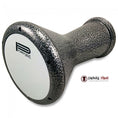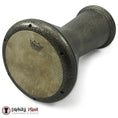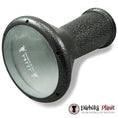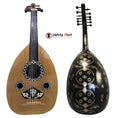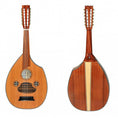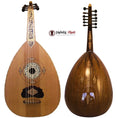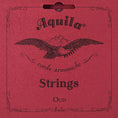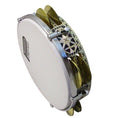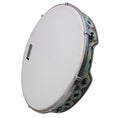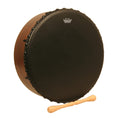- No products in the cart.
The Difference Between Turkish Darbuka And Egyptian Darbuka
01
May
Turkish Darbuka
The Turkish darbuka instrument was invented in ancient times by old civilizations of Mesopotamia, Anatolia, and mainly it was used in Central Asia. The differences between Turkish darbuka and Egyptian darbuka are mostly small, while the main difference is the region of origin. One significant physical difference between them is that Turkish darbuka has exposed edges that allow greater playability and better control over the instrument. Because of the exposed edges, it will enable its users to come up with a new playing technique called “finger-snapping.” This technique ultimately became a synonym for darbuka because Turkish darbuka is the best instrument to use the finger-snapping method. The downside is that it has hard edges that don’t allow players to perform a rapid roll move like they can on Egyptian darbuka. Turkish darbuka resembles a goblet, therefore is known as a goblet drum. The body is made of copper shell, and in ancient times darbuka was covered with leather which was later switched to synthetic materials. The skin is stretched over one end of the goblet allowing you to tune it by stretching the leather (or synthetic material) with screws. Body of darbuka is different from region to region, but usually, it’s made with various and colorful patterns.
Copper lightweight Turkish Derbeka
Turkish lightweight classic shape Darbuka
Egyptian Darbuka (Arab Darbuka)
Egyptian darbuka or Arab darbuka is a hand drum instrument used mainly in the Arabian region. It is almost the same as Turkish darbuka, with a few small differences. Egyptian darbuka body is made from fish or goat skin, but in ancient times it was made from clay. Many darbuka players claim that Egyptian darbuka resembles African Djembe. In modern times darbuka bodies are made from various materials like aluminum, brass, and copper while the skins are made out of plastic or synthetic materials. People that play Egyptian darbuka are aware that it must have natural skin so it can play deeper sounds. Musicians hold darbuka on their knees to be able to play naturally. Besides the differences of materials used to make darbuka, there are several techniques for playing each drum. The Turkish darbuka style exposes edges on the head of the drum, while Egyptian darbuka has a round head of the drum allowing musicians to perform in another playing style. Playing techniques of darbuka also differ from region to region.
In conclusion, both Turkish and EgyMother of Pearl Darbukaptian darbuka is essentially the same instrument except for production materials and the difference in playing styles. With minor variations in appearance, both of them are used to represent Asian and Arabic music style from centuries ago, up until today. In old times, darbuka was an instrument used only in Eastern cultures, but nowadays it got its place in Western music as well.
Mother of Pearl Darbuka
Egyptian Metal Darbuka








